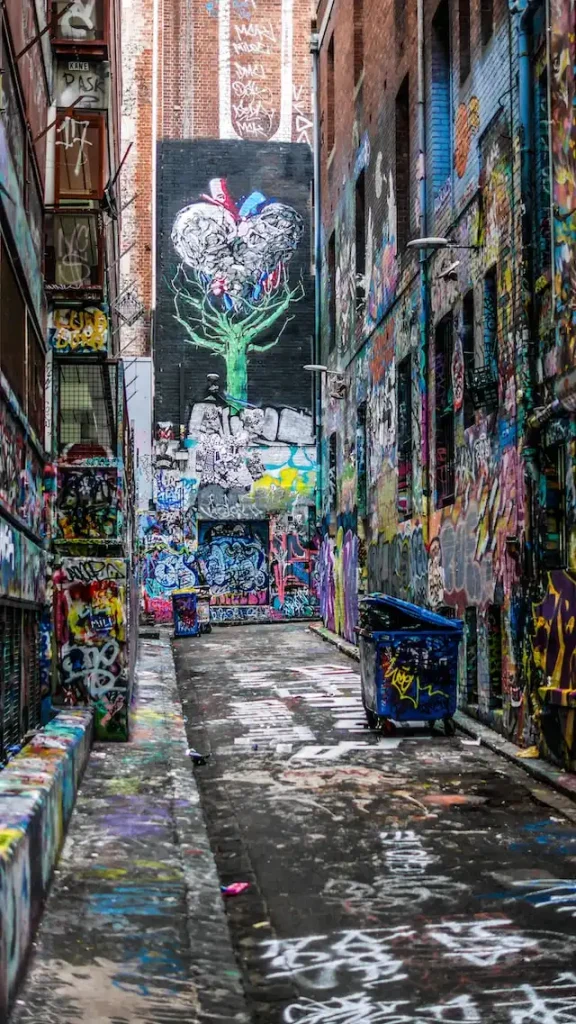Street art, once considered an act of rebellion and vandalism, has evolved into a dynamic and influential form of artistic expression that is reshaping contemporary culture. From vibrant murals adorning city walls to thought-provoking stencils gracing the sidewalks, street art has become an integral part of the urban landscape worldwide. In this article, we will explore the rise of street art and how its urban creativity is leaving an indelible mark on contemporary culture.
A Brief History of Street Art
Street art can trace its roots back to the graffiti movements of the 1960s and 1970s in cities like New York and Philadelphia. In those early days, graffiti served as a voice for marginalized communities, expressing social and political messages that were often overlooked by mainstream society. Over time, street art evolved from simple tags and signatures to more elaborate and visually captivating artworks.
Breaking Down Barriers: Street Art as an Inclusive Art Form
One of the most significant aspects of street art is its accessibility. Unlike traditional art forms confined to galleries and museums, street art is for everyone to experience and enjoy freely. This inclusivity breaks down the barriers between the artist and the audience, fostering a more direct and intimate connection with the community.
Catalyst for Social Change
Street art has always been closely linked to social and political movements. It has the power to address pressing issues, challenge societal norms, and spark conversations about various topics, including social justice, environmental concerns, and human rights. Street artists often use their work as a platform to amplify marginalized voices and advocate for positive change.
A Canvas for Cultural Diversity
Cities around the world boast an incredible diversity of cultures, and street art reflects this rich tapestry of human experiences. Local artists and international talents converge in urban spaces, infusing their unique cultural perspectives into their work. Street art becomes a living testament to cultural exchange and celebration of diversity.
Transforming Urban Spaces
Abandoned buildings, dull alleyways, and neglected public spaces find new life through street art. Urban artists use their creativity to transform these blank canvases into colorful and inspiring works of art, revitalizing the surroundings and inviting the public to engage with their environment in a new and exciting way.
Bridging Art and Technology
The rise of technology has also influenced street art. Augmented reality (AR) and virtual reality (VR) technologies are being integrated into street art installations, creating interactive and immersive experiences for viewers. This fusion of art and technology opens up new possibilities for artistic expression in the digital age.
Nurturing a New Generation of Artists
Street art has sparked a resurgence of interest in visual arts, encouraging a new generation of artists to explore their creativity. With street art as an accessible and visible form of expression, aspiring artists find inspiration and encouragement to pursue their passion and share their art with the world.
The Art of Collaboration
Street art often blurs the lines between individual creativity and collaborative efforts. Artists frequently come together to create large-scale murals and collaborate on projects that unite different styles and perspectives. These collaborations foster a sense of community and mutual respect among artists, transcending cultural and geographical boundaries.
Street Art as Urban Tourism
Street art has become a significant draw for tourists seeking to explore the vibrant and artistic side of cities. Cities like Berlin, London, New York, and São Paulo have gained international recognition as street art capitals, attracting travelers eager to discover the latest murals and graffiti masterpieces.
Legitimacy in the Art World
Over the years, street art has gained increasing recognition and legitimacy in the art world. Renowned street artists have held solo exhibitions in galleries and museums, with their works fetching high prices at auctions. This shift in perception has elevated street art to the realm of contemporary art, further blurring the lines between street and traditional art forms.
Conclusion
The rise of street art has undeniably transformed the cultural landscape of cities across the globe. It is no longer confined to the shadows but stands boldly as an influential and dynamic art form, shaping contemporary culture and society. Street art has broken free from its underground roots to claim its place as a respected and celebrated movement in the art world.
Through its inclusivity, social activism, cultural diversity, and fusion with technology, street art has become a powerful force that resonates with people of all backgrounds. As it continues to evolve and inspire, street art will undoubtedly leave an enduring legacy, shaping the way we view and experience art and culture in our urban environments.



